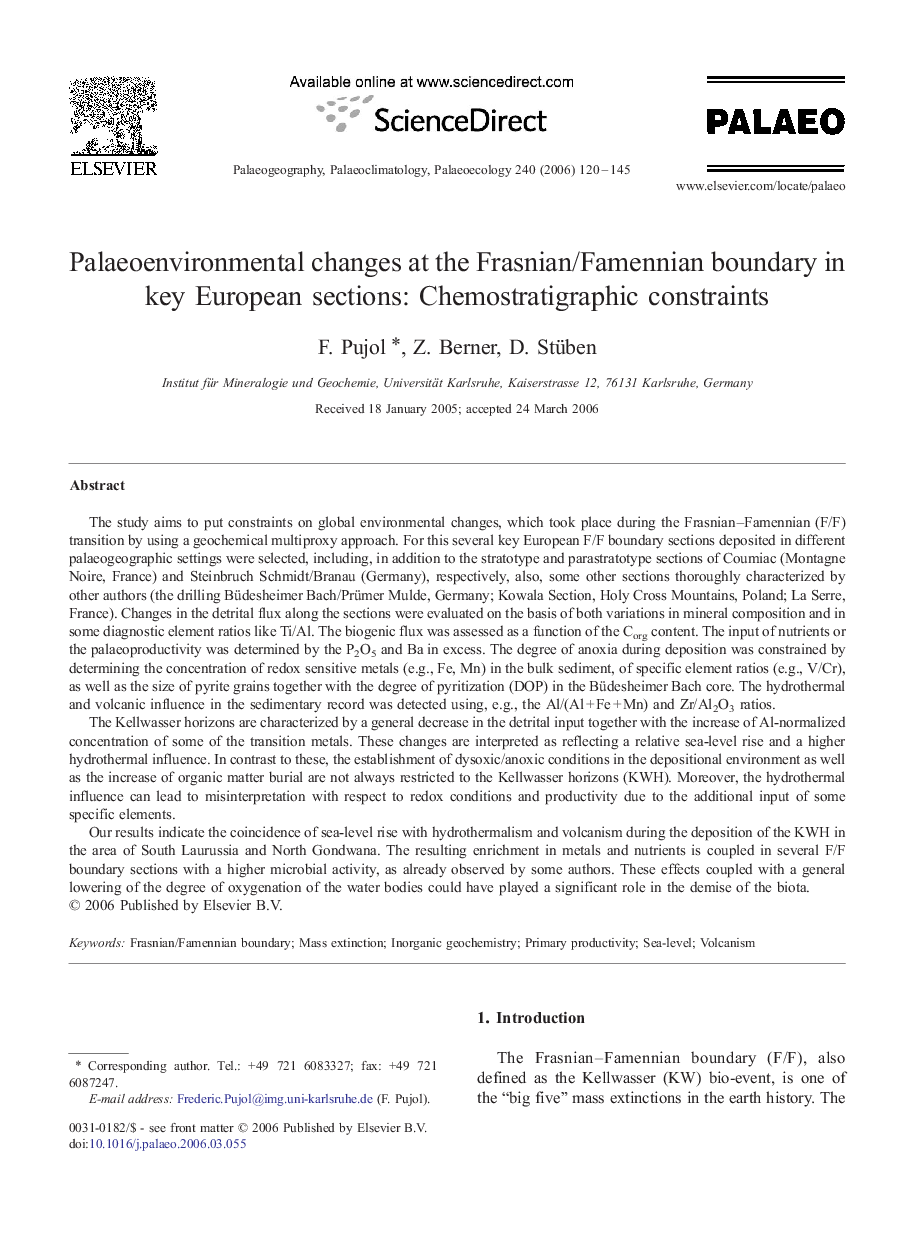| Article ID | Journal | Published Year | Pages | File Type |
|---|---|---|---|---|
| 4469294 | Palaeogeography, Palaeoclimatology, Palaeoecology | 2006 | 26 Pages |
The study aims to put constraints on global environmental changes, which took place during the Frasnian–Famennian (F/F) transition by using a geochemical multiproxy approach. For this several key European F/F boundary sections deposited in different palaeogeographic settings were selected, including, in addition to the stratotype and parastratotype sections of Coumiac (Montagne Noire, France) and Steinbruch Schmidt/Branau (Germany), respectively, also, some other sections thoroughly characterized by other authors (the drilling Büdesheimer Bach/Prümer Mulde, Germany; Kowala Section, Holy Cross Mountains, Poland; La Serre, France). Changes in the detrital flux along the sections were evaluated on the basis of both variations in mineral composition and in some diagnostic element ratios like Ti/Al. The biogenic flux was assessed as a function of the Corg content. The input of nutrients or the palaeoproductivity was determined by the P2O5 and Ba in excess. The degree of anoxia during deposition was constrained by determining the concentration of redox sensitive metals (e.g., Fe, Mn) in the bulk sediment, of specific element ratios (e.g., V/Cr), as well as the size of pyrite grains together with the degree of pyritization (DOP) in the Büdesheimer Bach core. The hydrothermal and volcanic influence in the sedimentary record was detected using, e.g., the Al/(Al + Fe + Mn) and Zr/Al2O3 ratios.The Kellwasser horizons are characterized by a general decrease in the detrital input together with the increase of Al-normalized concentration of some of the transition metals. These changes are interpreted as reflecting a relative sea-level rise and a higher hydrothermal influence. In contrast to these, the establishment of dysoxic/anoxic conditions in the depositional environment as well as the increase of organic matter burial are not always restricted to the Kellwasser horizons (KWH). Moreover, the hydrothermal influence can lead to misinterpretation with respect to redox conditions and productivity due to the additional input of some specific elements.Our results indicate the coincidence of sea-level rise with hydrothermalism and volcanism during the deposition of the KWH in the area of South Laurussia and North Gondwana. The resulting enrichment in metals and nutrients is coupled in several F/F boundary sections with a higher microbial activity, as already observed by some authors. These effects coupled with a general lowering of the degree of oxygenation of the water bodies could have played a significant role in the demise of the biota.
